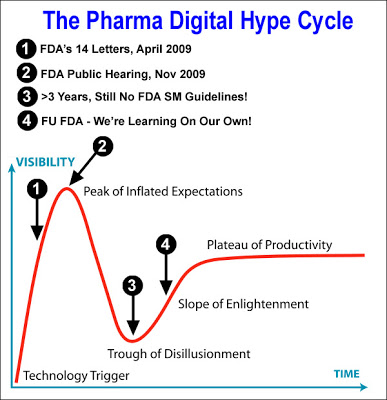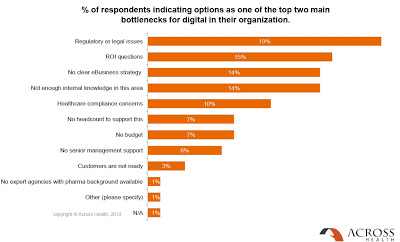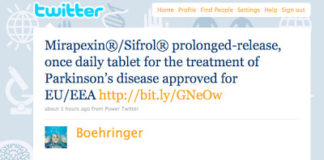 The pharmaceutical industry has often been criticized for being behind the “digital curve,” meaning that it lacks the expertise to fully take advantage of the Internet and other technology to improve marketing and communications.
The pharmaceutical industry has often been criticized for being behind the “digital curve,” meaning that it lacks the expertise to fully take advantage of the Internet and other technology to improve marketing and communications.
Although some pharma companies are digital “dunces,” others are digital “geniuses” (see, for example, “Is Your Brand a Digital Genius or a Feeble-Minded Idiot?“).
Lately, several major pharma companies have initiated programs to (1) identify, reward, and work with innovative technology companies, and (2) increase the digital “smarts” of their employees via structured educational activities.
Recently, I participated in two such activities:
- The Roche Digital Academy in Milan, Italy. Read about that here: “Overcoming Pharma’s Social Media Challenges: My Roche Digital Academy Presentation” and here: “Graduation Day at Roche Digital Academy: What’s Next?”
- Bayer HealthCare Grants4Apps™ in Berlin. Read: “Bayer Pharma Meets Pharmaguy Meets Healthcare App Startups: A Call for Best Practices” and “Pharmaguy EU Tour 2013 – The Infographic“.
Another pharma company that has reached out to reward digital innovators is Sanofi. Sanofi’s Data Design Diabetes Innovation Challenge had its inaugural run in 2011. This program engages technology entrepreneurs in a competitive framework while providing mentorship and education around deep patient-centric issues.
Other initiatives that foster pharma-technology company relations focus on the R&D side of the business. One example of this is Lilly’s Clinical Open Innovation project. Listen to this podcast: “TransCelerating and Crowdsourcing Pharma R&D“.
Today, I learned that J&J/Janssen just launched its Digital Health Masterclass in Europe (see here). This new “mentoring” program will offer a “springboard for the digital health influencers of tomorrow” and, ultimately, the chance to compete before a panel of experts and investors for a share in a €50,000 prize fund. It will no doubt also benefit J&J through “collaboration and exchange of ideas — working together to share knowledge”; i.e., Open Innovation.
These programs also help pharma companies learn about new technologies. According to the 2013 Digital Barometer for life sciences survey by Across Health (here), “Not enough internal knowledge” of digital is one of the top “bottlenecks” for digital in the industry (see chart below).
Is pharma on the path to benefiting from all this technology being developed by innovative companies?
Let me modify the “Gartner Hype Cycle” graph to illustrate where I believe pharma is today. My version is called the “Pharma Digital Hype Cycle”:
If you don’t know the FDA references I cite, just search this blog.
This is an exciting time to be a technology innovator in the health sciences. There’s the “Quantified Self” movement, which I joined for a time until I lost my Jawbone wristband somewhere in Berlin. FDA even approved a pill with a microchip inside (here)!
Now that pharma is seriously pushing the digital agenda WITHIN their organizations, technology innovators should get on the bandwagon and reap the benefits. I know I am, even though I am not a “technology” person per se. My technology is the critical human brain attached to a computer with Internet access AND the advantage of looking in from the outside. It may not be worth €50,000, but how about €3,000?










![6 Digital Tools at the Center of Healthcare Digitalization [INFOGRAPHIC]](http://ec2-54-175-84-28.compute-1.amazonaws.com/pharma-mkting.com/wp-content/uploads/2021/04/6DigitalTools_600px-100x70.jpg)




